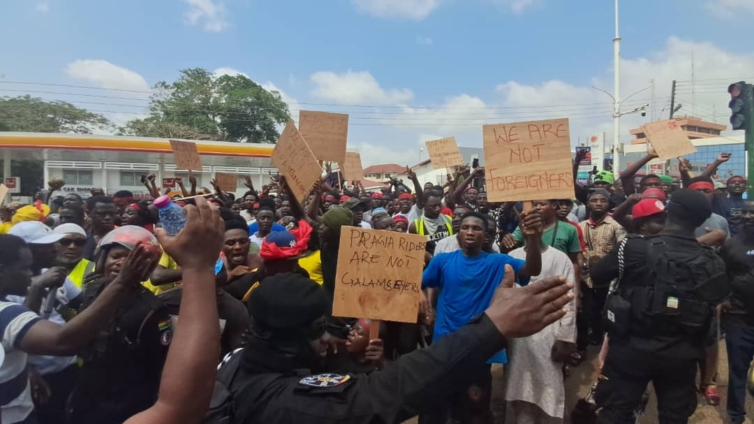Pragya riders protest in Kumasi over continued ‘harassment’ and ban from Adum,Kejetia routes

Hundreds of Pragya riders in Kumasi hit the streets to protest a road traffic directive that bars their tricycles from operating within the Central Business District, including Adum and Kejetia.

The riders, who form a major part of Kumasi’s informal transport system, say the restrictions have crippled their livelihoods and exposed them to daily harassment from city authorities.
The demonstrators earlier massed up at the Kumasi Metropolitan Assembly (KMA) to submit a petition to the Mayor before continuing their march through parts of the city.
Ashanti Regional Chairman of the National Union of Tricycle Operators Ghana, Seidu Mubarak, said the protest was triggered by what operators describe as persistent intimidation and extortion by local authorities.
“Today, we are here to demonstrate against the KMA on the kind of harassment, extortion and the continued disregard of the challenges we are facing as tricycle operators,” he told JOYNEWS.
“There are many appeals we have made to the assembly, yet they refuse to hear us.”
He added that the riders expected the situation to improve after political assurances during the 2024 campaign season.
According to him, the National Democratic Congress (NDC) promised in its manifesto to regularise and legalise tricycle operations — a commitment the riders say they are still waiting to see implemented.
Mubarak also noted that the government had previously taken steps toward creating a regulatory framework for tricycles, including sending union representatives and the Transport Minister to Rwanda to study best practices.
“They have been back since March this year, and till today, we don’t know where we are. So we want to call on the government to fast-track the legalisation,” he said.
The KMA maintains that the ban is necessary to reduce congestion and improve safety in the busy Adum–Kejetia enclave.
However, riders insist that without alternative routes or a clear regulatory framework, the directive amounts to discrimination against poor transport workers.




